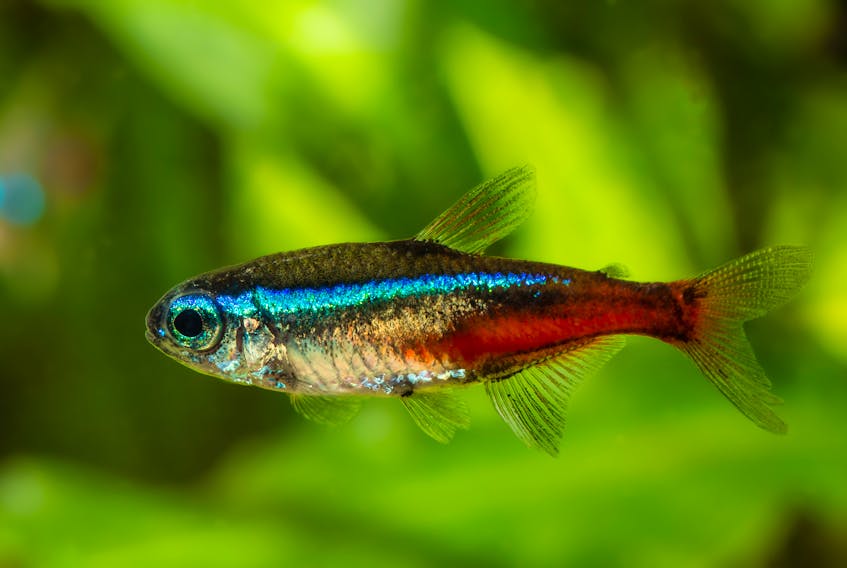There’s more than a few problems in the fishery.
Scientists found an apparent 70 per cent drop in the caplin biomass between 2015 and 2017, but aren’t sure how representative their science is, and say they don’t know what impact fishing and natural predation are having on the stocks.

Salmon have also done a disappearing act over the last two years, with back-to-back years with substantial declines in returning salmon, to the point that this year’s recreational fishery is substantially restricted.
Cod numbers have also apparently fallen off a cliff, though organizations like the Fish, Food and Allied Workers argue that the fishery should go ahead anyway because other things than fishing are causing the low biomass numbers.
Shrimp? One major shrimp zone saw its biomass drop by 16 per cent to the lowest level ever recorded, and fish harvesters face an additional cut of 25 per cent of their quotas. (Those same fishers saw a 78 per cent quota reduction in 2016 alone.)
All in all, a tough time for a crucial industry in this province, but something that people outside Newfoundland and Labrador probably know very little about.
One thing’s for sure: a good part of the uncertainty involved in fisheries science has to do with a hangover from the Harper administration, which allowed science funding to wither, especially when it came to the parts of science that did not immediately translate into commerce.
Theoretical and ecosystem-wide science was seen as a luxury, even though that sort of science critically underpins the work done on commercially valuable species.
So, amid all of the uncertainty that now faces fisheries science — in part because of the data hole in scientific research that remains after the Harper years — it’s good to see that the Department of Fisheries and Oceans is doing the important detail work.
Sorry, I’m being needlessly mean here.
But I have to say I was struck by the fact that, amid all the questions we need answered, DFO has had to use some of its science resources to address the concerns of fish-tank owners who might want to own fish that glow in the dark.
OK, not really in the dark; what I’m referring to is bioengineered fish that glow under ultraviolet light.
And not really just DFO either. The department, along with the federal departments of Environment and Climate Change Canada and Health Canada, were charged with examining the potential dangers of a genetically modified tetra — get ready for it — the GloFish® Electric Green® Tetra and the GloFish® Long-fin Electric Green® Tetra, and whether the fish should be allowed into Canada.
The freaky fish are one lean, mean glowing-green machine: “The novel colour phenotype is present in the muscle, as well as skin and eye. The universal nature of the promoter suggests expression may result in green colouration of internal organs, though this has not been specifically reported.” Just what the inserted gene is, and how it works, is a confidential business secret.
I was struck by the fact that, amid all the questions we need answered , DFO has had to use some of its science resources to address the concerns of fish-tank owners who might want to own fish that glow in the dark.
Now, I understand how crucial it is that transgenic species get a full risk review; once the barn door on a genetic variant is open, there’s no stuffing it back into the old farm accessory building.
After a study stretching for 59 pages and 10,276 words, the answer seems to be that the risk the fish pose is low: the research report says about the green-glowing beasties, known as CGT2016, that “based on the sequence identity and the structure of the inserted transgenes, the production of allergens or toxins is not anticipated.”
Some parts of the report are even a little humourous: “The indirect human health (IHH) exposure assessment concluded that human exposure potential of CGT2016 is low to medium as its intended use is as an ornamental aquarium fish, thus largely limiting public exposure to those individuals who possess them for use in home aquaria.” Translation: “it’s only those aquarium people anyway.” (About 12 per cent of Canadian households have an aquarium.)
The basic information is that the fish is unlikely to survive if it escapes to the Canadian wild. It can’t survive winter temperatures, and the inserted genes apparently make it both more susceptible to cold, and less reproductively successful. In other words, freedom in the wild would be short-lived.
But with every other real concern to be address in major fisheries, I’m just putting this out there: do we even need fish tank fish that glow?
And when all the other fish are all gone, I have another question.
Can we eat ’em?
Russell Wangersky’s column appears in 39 SaltWire newspapers and websites in Atlantic Canada. He can be reached at [email protected] — Twitter: @wangersky.
Recent columns by this author









